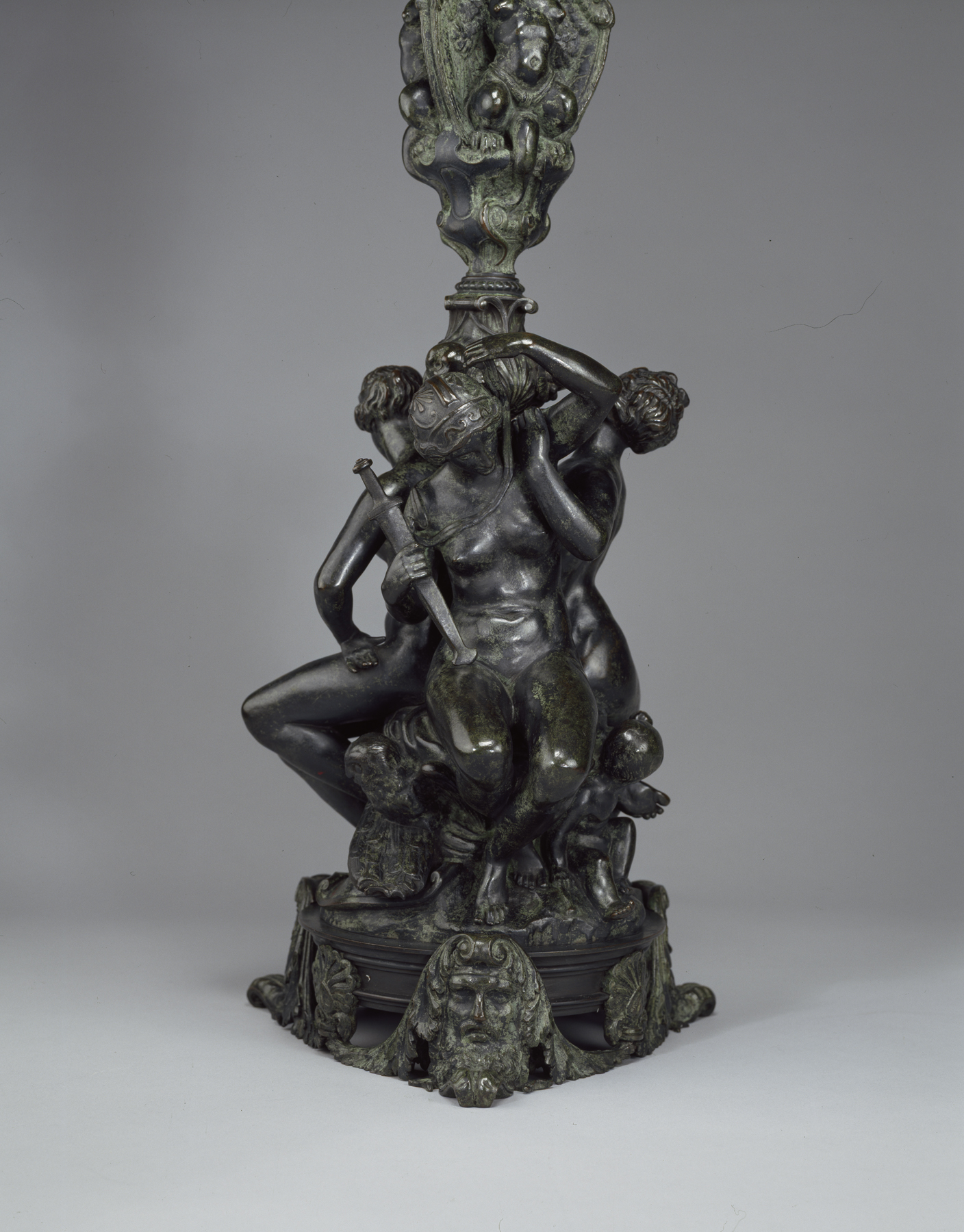Candelabra of Nine Lights, Candelabra with Nine Branches
(18th and 19th Centuries )
Barye produced decorative objects as well as figurative sculptures. His revival of the Renaissance style is illustrated by this pair of candelabra, which incorporates such classical motifs as the palmette-shaped ornaments, known as anthemia, flanked by mascarons (masks) on the bases. The three seated nude figures are the goddesses who competed in the beauty contest that resulted in the Trojan War: Minerva, identified by her owl, Juno and her peacock, and Venus with her dolphin. At the top, the three Graces dance around a finial topped by a Roman lamp.
Originally, Barye's Roger and Angelica (Walters 27.173) and these candelabra formed a mantle ornament that was commissioned in about 1840 by the duke of Montpensier, the youngest son of King Louis-Philippe. The sculpture and the candelabra were subsequently cast in multiples and sold separately.
Inscription
Provenance
Provenance (from the French provenir, 'to come from/forth') is the chronology of the ownership, custody, or location of a historical object. Learn more about provenance at the Walters.
Mme Barye; William T. Walters, Baltimore, 1885, by purchase; Henry Walters, Baltimore, 1894, by inheritance; Walters Art Museum, 1931, by bequest.
Geographies
France, Paris (Place of Origin)
Measurements
36 3/4 x 16 7/8 x 16 7/8 in. (93.3 x 42.9 x 42.9 cm)
Credit Line
Acquired by William T. Walters, 1885
Location in Museum
Not on view
Accession Number
In libraries, galleries, museums, and archives, an accession number is a unique identifier assigned to each object in the collection.
In libraries, galleries, museums, and archives, an accession number is a unique identifier assigned to each object in the collection.
VO.4 (27.168, 27.169)




